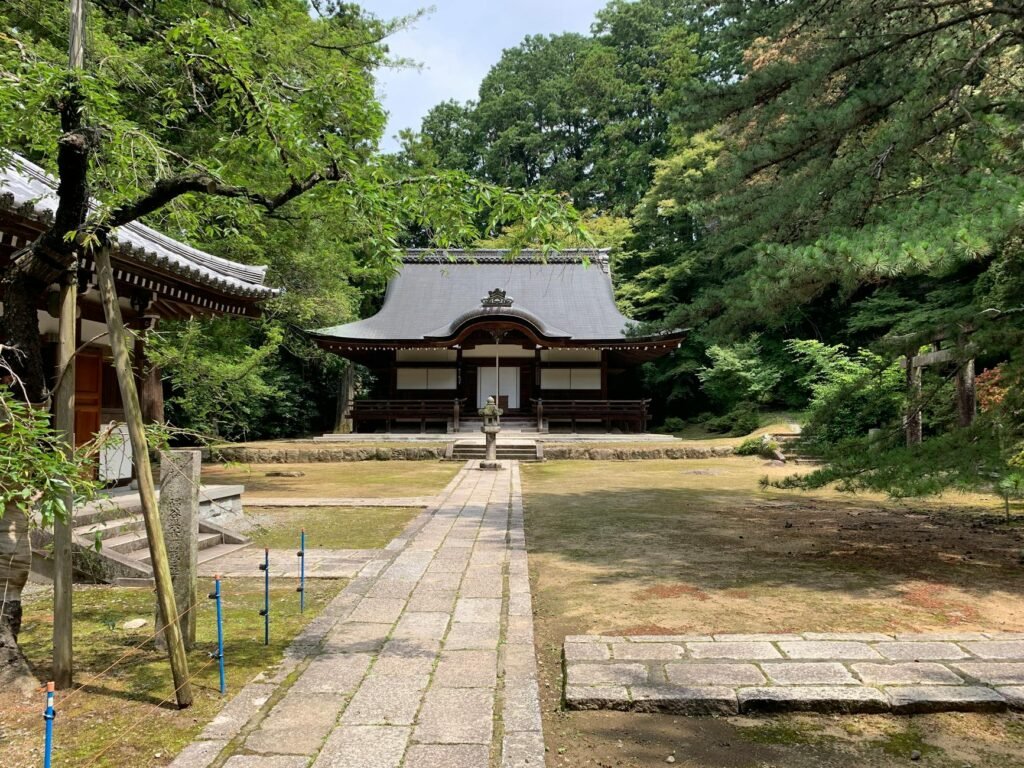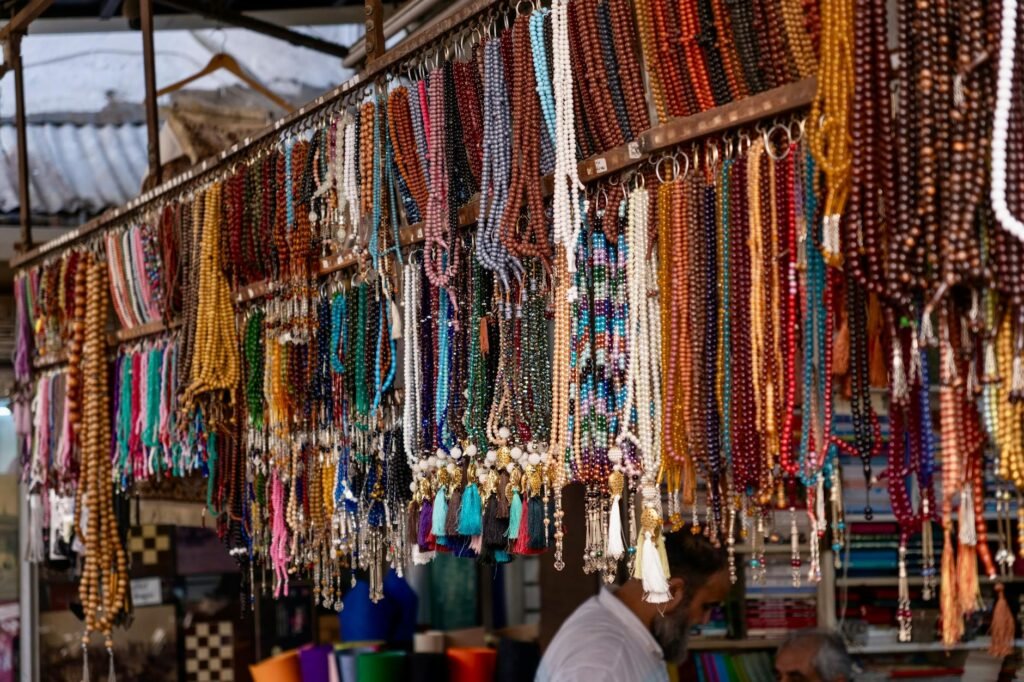Japan, with its breathtaking cherry blossoms, ancient temples, and mouth-watering cuisine, has long been considered a dream destination for many travelers but also an expensive one. What if I told you that exploring the Land of the Rising Sun doesn’t have to drain your savings? As of 2025, Japan has become increasingly accessible to budget travelers, with hostels popping up in rural areas, affordable dining options at every corner, and strategic travel passes that can save you thousands of yen.
The truth is, while a typical tourist might spend between $90-350 per day in Japan, savvy travelers can cut that cost dramatically. 💰 Consider this: a round-trip flight from Los Angeles to Tokyo costs around $700 in February versus $1,100 during cherry blossom season. A single meal from a convenience store costs just ¥500 ($3.75), compared to restaurant prices that can easily exceed ¥3,000. And with the right accommodation choices like capsule hotels for ¥3,500 per night instead of traditional hotels you could potentially save ¥30,000-¥60,000 ($200-$399) on your entire trip!
Ready to turn your Japanese travel dreams into reality without breaking the bank? In this comprehensive guide, we’ll walk you through 7 game-changing strategies to maximize your yen from scoring affordable flights and navigating transportation options to finding budget-friendly meals and accommodations that don’t sacrifice comfort or authentic experiences. Let’s dive in and discover how to experience the magic of Japan while keeping your wallet happy! ✈️🗾
Find Cheap Flights to Japan That Save You Hundreds

Finding affordable flights to Japan is one of the most effective ways to significantly reduce your overall travel costs. With airfare often being the largest expense of an international trip, implementing strategic booking techniques can save you hundreds of dollars before you even arrive in the Land of the Rising Sun.
Book during off-peak seasons (February, early June) for significant discounts
Japan experiences distinct travel seasons that directly impact flight prices. The off-season, spanning from late October to early April (with February being particularly economical), offers some of the most budget-friendly airfares to Japan. During these months, airlines frequently reduce their prices to attract travelers during the lower-demand periods.
Early June also presents an excellent opportunity for budget travelers. This period falls after Golden Week (late April to early May) and before the summer peak season kicks in, creating a perfect window where airlines offer competitive rates to fill seats.
By targeting these off-peak times, you can often secure flights at 30-40% less than peak season rates. For example, a flight that might cost $1,200 during cherry blossom season could be available for around $700-800 in February or early June.
Avoid peak tourist times like cherry blossom season
While Japan’s cherry blossom season (March to May) offers breathtaking scenery, it comes at a premium price. This period attracts approximately 63 million visitors, creating enormous demand that drives up flight costs significantly. The Japanese Meteorological Corporation even provides specialized blooming forecasts, showing just how significant this seasonal event is for tourism.
Similarly, summer months (June through August) see increased travel due to school holidays and numerous festivals throughout Japan. This heightened demand results in soaring airfares and limited availability.
If you’re traveling on a shoestring budget, avoiding these peak periods can lead to substantial savings. If experiencing cherry blossoms is a must for your Japan bucket list, consider booking your flights 6-8 months in advance to secure somewhat better rates during this high-demand season.
Use fare comparison tools to secure the best deals
Technology is your greatest ally when hunting for cheap flights to Japan. Utilizing flight comparison websites allows you to:
- Compare prices across multiple airlines simultaneously
- Set price alerts for your preferred travel dates
- Identify the most economical days to fly
- Discover budget airline options that might not appear in standard searches
Being flexible with your travel dates can yield significant savings. Even shifting your departure or return by a few days can sometimes reduce costs by hundreds of dollars. Many fare comparison tools offer calendar views that display price variations across different dates, making it easy to identify the most economical options.
Consider alternative routing as well. While direct flights to Tokyo are convenient, flights with connections (especially through major Asian hubs like Seoul, Taipei, or Hong Kong) can often be substantially cheaper. The minor inconvenience of a layover might save you enough money to fund several extra days of exploration in Japan.
Now that we’ve covered how to get to Japan without depleting your travel fund, let’s examine how to maximize your transportation budget once you’ve arrived. In the next section, we’ll explore smart choices for getting around this fascinating country efficiently and economically.
Maximize Your Transportation Budget with Smart Choices

Now that you’ve secured those budget-friendly flights to Japan, it’s time to tackle the next significant expense: getting around the country. Japan’s efficient transportation network offers numerous options, but choosing wisely can save you hundreds of dollars during your trip.
Consider the Japan Rail Pass for extensive travel (7, 14, or 21 days)
The Japan Rail Pass has long been considered the gold standard for tourists planning to visit multiple cities. Available in 7, 14, or 21-day options, this pass gives you unlimited access to JR trains, including the high-speed Shinkansen. However, it’s worth noting that recent price increases have somewhat diminished its value compared to previous years.
Before purchasing, calculate whether your planned journeys justify the cost. The pass is typically most economical if you’re planning at least two long-distance Shinkansen trips between major cities like Tokyo, Osaka, and Hiroshima. For travelers sticking to one region or making fewer inter-city journeys, single-journey tickets or regional passes might be more cost-effective.
Explore regional rail passes for targeted travel (JR East Tohoku, JR Hokkaido)
For travelers focusing on specific regions, regional JR passes offer excellent value. These specialized passes cover various train lines, buses, and sometimes ferries within designated areas such as Hokkaidō, Tōhoku, and other regions.
A key advantage of regional passes is that they’re often more affordable than the nationwide JR Pass while providing comprehensive coverage of their specific areas. Additionally, these passes are available to foreign residents in Japan, making them accessible to a broader range of travelers than the standard JR Pass.
ALSO READ: How Much Does a Trip to Hawaii Really Cost?
Use budget airlines like Peach and Jetstar for long-distance travel
With rising train costs, domestic flights are becoming an increasingly attractive option for budget travelers in Japan. Airlines like Peach and Jetstar frequently offer fares that undercut Shinkansen prices, especially for longer journeys.
When considering flights, remember to factor in the additional time and cost of traveling to and from airports, which are often located further from city centers than train stations. Still, for certain routes, the savings can be substantial enough to justify the extra planning required.
Take advantage of overnight buses for combined transportation and accommodation
For the ultimate budget travel hack, overnight buses provide both transportation and a place to sleep, effectively eliminating one night’s accommodation cost. Companies like Willer Express offer passes that provide unlimited travel on non-consecutive days, giving you flexibility while keeping costs down.
While bus journeys are generally slower than trains, they’re significantly cheaper and can be surprisingly comfortable. Many overnight buses feature reclining seats, privacy curtains, and even USB charging ports to ensure you arrive at your destination well-rested.
Look into the Seishun 18 Ticket for cheaper travel during specific periods
For travelers who prioritize savings over speed, the Seishun 18 Ticket offers a unique opportunity. This seasonal discount ticket allows unlimited travel on local and rapid JR trains (excluding express and Shinkansen trains) for five calendar days, which don’t have to be consecutive.
The ticket is only available during specific periods throughout the year, typically coinciding with school holidays. While journeys take longer using only local trains, this option provides an authentic glimpse of Japanese countryside and small towns that many travelers miss when zooming by on the Shinkansen.
With your transportation strategy optimized, you’ll have more of your budget available for experiencing Japan’s incredible culture and cuisine. Next, we’ll explore how to score affordable accommodation without sacrificing comfort, another crucial element in stretching your yen further during your Japanese adventure.
Score Affordable Accommodation Without Sacrificing Comfort

Now that we’ve covered how to maximize your transportation budget in Japan, let’s focus on another significant expense: accommodation. Finding the right place to stay can dramatically impact your overall travel costs while still ensuring you get a good night’s rest.
Stay in capsule hotels for privacy at lower costs (¥3,500-4,500 per night)
Capsule hotels represent one of Japan’s most unique accommodation options, offering privacy without the high price tag. These compact sleeping pods typically cost between ¥3,500 and ¥4,500 per night in major cities like Tokyo, though prices can vary based on location and amenities.
Each capsule comes equipped with essentials like a comfortable mattress, and many include extras such as TVs and reading lights. Most capsule hotels provide secure lockers for your belongings and feature communal bathing facilities that offer an authentic Japanese bathing experience.
While capsules in central Tokyo might exceed ¥4,000 per night, especially during peak seasons, you can find more affordable options under ¥3,500 in smaller cities or less touristy neighborhoods. For the best rates, book in advance and compare prices across different booking platforms.
Book business hotels for clean, basic rooms with amenities (¥8,000 for two)
Business hotels are Japan’s answer to affordable yet comfortable private accommodations. Typically located near train stations for convenience, these hotels offer small but efficient rooms priced between ¥2,500 and ¥12,000, with rooms for two people averaging around ¥8,000.
These establishments cater primarily to business travelers, providing clean, no-frills rooms with essential amenities. Many include complimentary breakfast, making them an excellent value for budget-conscious travelers who prefer private rooms over shared spaces.
Choose hostels and guesthouses for budget-friendly options (¥3,000 for dorm beds)
Hostels in Japan offer some of the most affordable accommodation options, with dormitory-style beds available from ¥2,000 to ¥6,000 per night, averaging around ¥3,000. Unlike their Western counterparts, Japanese hostels often provide a cozier, less social atmosphere while maintaining cleanliness and comfort.
Many hostels offer traditional Japanese-style rooms alongside Western options, providing an authentic cultural experience. These establishments typically include shared kitchens, allowing you to save even more by preparing some of your own meals.
Consider camping during summer months (¥500-1,000 per person)
For the more adventurous traveler visiting during warmer months, camping presents a substantial opportunity to save on accommodation costs. Campsite fees range from completely free to ¥8,000, with most budget options costing between ¥500 and ¥1,000 per person.
Remember that camping in Japan is only permitted in designated areas, so research thoroughly before setting out. While requiring more planning and equipment, camping allows you to experience Japan’s natural beauty while significantly reducing your accommodation expenses.
Work for accommodation at hostels or try Couchsurfing for free stays
For extended trips or extremely tight budgets, consider working in exchange for accommodation. Many hostels offer programs where you can clean, staff the reception desk, or perform other tasks in exchange for a free place to stay.
Alternatively, platforms like Couchsurfing connect travelers with locals willing to host them for free. This option not only eliminates accommodation costs but also provides valuable cultural immersion and local connections.
WWOOF (World Wide Opportunities on Organic Farms) offers another possibility, with a ¥5,500 membership fee granting access to farming opportunities across Japan where you work in exchange for food and lodging.
With your accommodation costs significantly reduced using these strategies, you’ll have more of your budget available for the next essential travel expense: food. In the next section, we’ll explore how to eat like a local without breaking the bank, allowing you to experience Japan’s incredible cuisine while maintaining your shoestring budget.
Eat Like a Local Without Breaking the Bank

Now that you’ve secured affordable accommodation for your Japan adventure, it’s time to tackle another significant expense: food. Fortunately, Japan offers numerous ways to enjoy delicious meals without emptying your wallet.
Enjoy convenience store meals for quality food at low prices
Japanese convenience stores (konbini) are nothing like their counterparts in other countries. These ubiquitous establishments offer surprisingly high-quality, fresh food at affordable prices. In urban areas, you’ll find 7-Eleven, Lawson, and FamilyMart on nearly every corner, providing meals typically under ¥700 ($5).
Konbini food options include:
- Onigiri (rice balls): Filled with tuna mayo, salmon, or other fillings, these portable snacks cost around ¥150-200
- Bento boxes: Complete meals with rice, protein, and vegetables for ¥400-700
- Sandwiches (sando): Japanese-style sandwiches with fillings like egg salad or shrimp katsu, priced between ¥270-400
- Hot foods: Items like yakisoba pan (noodles in bread) and nikuman (steamed buns) for ¥110-150
Each konbini chain has its specialty: 7-Eleven offers a broad selection and foreigner-friendly services, Lawson focuses on health-conscious options and premium sweets, while FamilyMart balances affordability and taste.
Visit 100-yen shops for affordable snacks and essentials
While exploring Japan on a budget, don’t overlook 100-yen shops for snacks and necessities. These stores offer a variety of food items at just ¥100 (plus tax), making them perfect for stocking up on snacks for day trips or supplementing your meals.
Dine at conveyor belt sushi restaurants and shokudōs for meals under ¥1,000
For a sit-down meal experience without the high price tag, conveyor belt sushi restaurants (kaiten-zushi) and shokudōs (casual Japanese eateries) offer excellent value. Most plates at conveyor belt sushi restaurants range from ¥100-500, allowing you to control your spending while enjoying fresh sushi. Shokudōs typically serve set meals featuring Japanese classics for ¥700-1,000.
Purchase evening discounted items from supermarkets and department stores
A budget traveler’s secret weapon is visiting supermarkets and department store food halls (depachika) in the evening, typically 30 minutes to an hour before closing. During this time, fresh foods are often discounted by 30-50% to ensure they sell before the day ends. This is an excellent opportunity to purchase quality prepared foods, sushi, and bento boxes at a fraction of the original price.
Focus on inexpensive local dishes like curry, ramen, and bento boxes
Japan offers numerous affordable yet delicious local dishes:
- Ramen: Freshly prepared ramen bowls at konbini cost between ¥500-650, featuring varieties like miso, shoyu, and tonkotsu with toppings including meats, eggs, and vegetables
- Curry rice: A filling, inexpensive meal found at specialized curry shops
- Bento boxes: Available at konbini, train stations, and specialized bento shops, these range from ¥400-2,000 depending on contents and quality
- Nikuman: Steamed buns with savory fillings like pork cost just ¥110-150 and make for a satisfying snack
For the budget-conscious traveler in 2025, konbini food remains safe, diverse, and accommodating to various dietary preferences, including vegetarian and vegan options. These affordable dining strategies allow you to experience authentic Japanese cuisine without compromising your travel budget.
With your food budget optimized, you’ll be ready to experience Japan’s rich culture. In the next section, we’ll explore how to enjoy Japan’s cultural offerings through free and low-cost activities that provide authentic experiences without the premium price tag.
Experience Japan’s Culture with Free and Low-Cost Activities

Now that you’ve learned how to satisfy your hunger without emptying your wallet, let’s explore how to immerse yourself in Japanese culture without spending a fortune. Japan offers countless cultural experiences that are either free or very affordable, allowing budget travelers to enjoy authentic experiences without compromising their shoestring budget.
Visit free Shinto shrines, temples, and urban parks
Japan’s religious and natural landmarks offer some of the most memorable experiences at zero cost. The stunning Fushimi Inari Shrine in Kyoto, famous for its thousands of vermilion torii gates winding up the mountainside, is completely free to visit and just a short train ride from central Kyoto. As you walk through the gates into the sacred forest, you’ll experience a tranquility that contrasts beautifully with the bustle of urban Japan.
In Tokyo, Sensoji Temple in Asakusa stands as Japan’s oldest temple and welcomes visitors without any entrance fee. The approach to the temple, Nakamise-dori, is lined with traditional shops and stalls where you can soak in the atmosphere without spending anything.
Urban parks like Ueno Park in Tokyo offer free cultural experiences, especially during cherry blossom season. Similarly, Nara Park gives you the unique opportunity to interact with over 1,200 free-roaming deer while visiting free sites such as Yoshikien Garden. For a peaceful retreat in Tokyo, Meiji-jingū’s forested grounds provide a serene escape from the city’s intensity.
Take advantage of the Grutto Museum Pass in Tokyo (¥2,500)
For culture enthusiasts visiting Tokyo, the Grutto Museum Pass is an exceptional value at just ¥2,500. This pass gives you discounted or free access to over 90 museums and cultural facilities throughout the Tokyo metropolitan area. While the reference doesn’t specifically list all included venues, cultural spaces like the Meguro Parasitology Museum and the Rainbow Sewerage Museum offer free admission even without the pass.
The National Diet also provides free guided tours of Japan’s legislative building, giving visitors insight into the country’s political system without spending a yen.
Participate in local festivals for authentic cultural experiences
Japan’s calendar is filled with traditional festivals (matsuri) that provide authentic cultural experiences for free. While not specifically mentioned in the reference, events like Comiket, the massive anime and manga convention, celebrate Japanese pop culture and can be experienced on a budget.
Seasonal illuminations during winter, particularly in Tokyo’s Shibuya and Roppongi districts, transform the city into a magical wonderland that can be enjoyed at no cost. These events give budget travelers a chance to experience Japan’s blend of tradition and innovation firsthand.
Join free walking tours available in major cities
Several major Japanese cities offer free walking tours led by local volunteers eager to share their knowledge and passion. In Tokyo’s Yanesen area, you can discover pre-WWII architecture and atmosphere through preserved streets and temples. These walking tours not only provide cultural context but also insider tips that can help you save money throughout your trip.
The Old Town of Takayama, with its well-preserved Edo Period architecture, can be explored on foot, allowing you to appreciate historical Japan without spending on expensive tours.
Explore local markets to connect with Japanese culture
Markets offer a window into local life and culture without requiring entrance fees. Tsukiji Market in Tokyo, while famous for its tuna auctions (which require early morning attendance and prior application), allows visitors to wander through its outer market areas for free, observing local food culture and traditions.
Similarly, exploring the colorful fashion scene in Harajuku, particularly along Takeshita Dori, provides insight into contemporary Japanese youth culture without any cost beyond what you choose to spend.
With these cultural experiences enriching your Japan adventure, you’ll be ready to consider what mementos to bring home. In the next section, we’ll explore how to shop smartly for souvenirs and necessities while maintaining your budget travel approach.
Shop Smartly for Souvenirs and Necessities

After experiencing Japan’s incredible cultural offerings through free and low-cost activities, you’ll likely want to bring home some mementos of your journey. Fortunately, shopping for souvenirs in Japan doesn’t have to drain your wallet. With some strategic approaches, you can find quality keepsakes and necessary items without compromising your budget travel plans.
Browse 100-yen stores for affordable souvenirs and daily items
Japan’s 100-yen stores (equivalent to dollar stores but often with higher quality merchandise) are treasure troves for budget travelers. For just ¥100 (plus tax), you can find an impressive variety of unique, practical, and charming items that make perfect souvenirs.
Several major chains worth visiting include:
- Seria: Known for high-quality character goods and unique products
- DAISO: The largest chain with the most extensive selection, including food and household items
- Can Do: Offers character and seasonal products
- Watts: Less common but carries quality items in smaller stores
These stores offer an amazing range of souvenir options including:
- Stationery: Cute notebooks, Miffy pencil sharpeners, sushi erasers, rainbow sticky notes, and pastel markers
- Tableware: Sake cups, carafes, tea cups, and chopsticks perfect gifts for foodies
- Kitchen Tools: Sandwich containers, egg timers, cat food molds, and soft-boiled egg molds
- Sanrio Merchandise: Hello Kitty charms, Pochacco pouches, and other character items
- Traditional Items: Folding fans (uchiwa), tabi socks with maneki neko designs
- DIY Games and Crafts: Kendama toys, mini shinkansen building blocks, and washi tape
- Children’s Toys: Higher quality than typical dollar store offerings
- Hair Accessories: Budget-friendly options in various styles
- Japanese Learning Materials: Workbooks for language learners
The stock at these stores constantly changes, making each visit a new adventure. You can assemble a collection of small, lightweight gifts that won’t take up much luggage space while still being uniquely Japanese.
Take advantage of tax-free shopping for purchases over ¥5,000
While 100-yen stores offer great value for smaller items, for larger purchases, be sure to look for tax-free shopping opportunities. When you spend over ¥5,000 at participating retailers, you can shop tax-free as a foreign visitor. This can result in significant savings, especially on higher-priced souvenirs or electronics.
ALSO READ: 10 Hidden Gems in Japan You’ve Never Heard Of
Many department stores and specialty shops prominently display “Tax-Free” signs in their windows. When making a qualifying purchase, bring your passport to the tax-free counter where staff will handle the paperwork. The tax savings (typically 10%) can make a meaningful difference in your budget travel expenses.
Look for evening discounts at department stores and supermarkets
Timing your shopping can lead to substantial savings on your Japan vacation. Many department stores and supermarkets offer evening discounts, particularly on food items. As closing time approaches (usually after 7 or 8 PM), fresh food items like sushi, bento boxes, and prepared meals are often marked down by 30-50%.
This strategy works particularly well for budget-conscious travelers who need daily necessities or want to try Japanese foods without paying full price. Department store basement food halls (depachika) are especially good places to find these discounts.
For souvenirs like sweets and snacks, visiting just before closing time can yield significant savings while still getting quality Japanese products to share with friends and family back home.
Now that you’ve mastered how to shop smartly for souvenirs and daily necessities, let’s move on to the final piece of the puzzle. In the next section, we’ll discuss how to plan strategically to maximize your budget throughout your entire Japan trip, bringing together all the money-saving techniques we’ve covered.
Plan Strategically to Maximize Your Budget

Now that we’ve covered how to shop smartly for souvenirs and necessities, let’s focus on strategic planning – perhaps the most crucial aspect of traveling Japan on a shoestring budget. With careful planning, you can experience this amazing country without draining your bank account.
Consider your daily budget needs (¥12,000-47,000 or $90-350 USD)
Understanding your daily spending requirements is essential for budget travel in Japan. Based on recent data, travelers can expect to spend between ¥12,000-47,000 ($90-350 USD) per day, depending on your travel style and choices. Breaking this down:
- Budget travelers: Can manage with approximately ¥12,000 ($90) daily by choosing capsule hotels, eating at affordable local spots, and prioritizing free activities
- Mid-range travelers: Should plan for around ¥25,000-30,000 ($185-225) daily
- Luxury travelers: May spend upwards of ¥47,000 ($350) daily
One experienced traveler reported spending an average of $110 per day during a 16-day winter trip, which included:
- Accommodation: Varied from $40 for capsule hotels to $155 for traditional ryokans
- Food: Approximately $23.20 daily (with many meals under ¥1000/$7)
- Activities: Just $2 daily on average, thanks to many free attractions
- Transportation: Variable costs, especially considering recent Japan Rail Pass price increases
Winter travel, in particular, offers significant savings as accommodation and activity prices drop considerably during this off-season period.
Book accommodations directly for better rates
While online travel agencies are convenient, booking directly with Japanese accommodations often results in better rates. Consider these approaches:
- Contact ryokans, hotels, and guesthouses directly via email or their websites
- Look beyond the typical booking platforms for special offers
- Consider alternative accommodation options like Couchsurfing, housesitting, or volunteering through WorldPackers if you’re on an extremely tight budget
- For traditional accommodations, prices typically range from $40 per night for capsule hotels to $155 for authentic ryokan experiences
Research and plan your itinerary to avoid unexpected expenses
Detailed planning helps prevent budget-busting surprises during your Japan adventure:
- Transportation planning: The Japan Rail Pass is no longer as cost-effective as it once was. Calculate whether individual train tickets might be cheaper for your specific itinerary
- Consider alternatives: Long-distance buses offer significant savings compared to trains, though they’re slower and less comfortable
- City transportation: Research local subway and bus systems in advance to avoid confusion and unnecessary expenses
- Attraction scheduling: Many Japanese attractions offer free admission days or discounted evening entries
A well-researched itinerary covering cities like Tokyo, Hakone, Kyoto, Hiroshima, and Osaka can be managed affordably with proper planning.
Use local booking platforms like Rakuten Travel for better deals
Japanese domestic booking platforms often offer better prices than international sites:
- Rakuten Travel: Features accommodations rarely listed on Western booking sites, often at lower prices
- Domestic flights: Book directly with Japan Airlines (JAL) or All Nippon Airways (ANA) when purchasing your international tickets for significant discounts on internal flights
- Local tour operators: Often provide more authentic experiences at lower prices than international tour companies
- Regional promotion campaigns: Local governments occasionally run tourism campaigns with special discounts
By utilizing these Japan-specific resources, you can stretch your budget further while enjoying authentic experiences that many tourists miss. Remember that early planning typically yields the best rates, especially during peak travel seasons like cherry blossom time or autumn foliage periods.

Japan’s reputation as an expensive destination shouldn’t deter budget-conscious travelers. By applying the seven money-saving strategies outlined in this guide from finding affordable flights during off-peak seasons to utilizing regional rail passes instead of the pricier JR Pass you can experience this fascinating country without breaking the bank. With careful planning, you can reduce your daily expenses to between $90-150 USD, saving potentially ¥30,000-60,000 ($200-399) throughout your journey.
Remember that some of Japan’s most authentic experiences come with little or no cost hiking scenic trails, exploring urban parks, participating in local festivals, and visiting Shintō shrines. Whether you’re sleeping in a capsule hotel, enjoying discounted supermarket bentos, or utilizing overnight buses that double as accommodation, budget travel in Japan doesn’t mean sacrificing quality experiences. Start planning your affordable Japanese adventure today, and discover why this incredible destination is more accessible than you might have thought.
